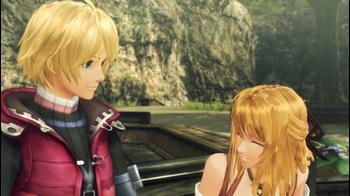Xenoblade Chronicles: Definitive Edition Review
It's funny to look back and remember when Xenoblade Chronicles struggled to hit western shelves during its original launch, and now Xenoblade is one of Nintendo’s larger franchises. When the original game did finally release worldwide, those who played it were treated to a brilliant RPG with a scale so massive that it pushed the Nintendo Wii to its absolute limits. It later was also one of the few titles made specifically for the New 3DS, and while the visuals took a serious hit I’ve always been impressed they were able to fit a game that massive on a portable system at all.
Times have changed and hardware has significantly improved since then. Given the rise in popularity with Smash Bros and Xenoblade Chronicles 2, Monolith Soft has decided to revisit the game that started their prosperous relationship with Nintendo in the form of Xenoblade Chronicles: Definitive Edition. This version of the game features an overhauled visual presentation, re-recorded and remixed music, new quality of life improvements, a brand new epilogue, and much more. I owned both previous releases of the game but never had a chance to fully finish either, so playing DE gives me an interesting perspective on this. Half of my time spent was catching up and marveling at how much the team improved the presentation, and the other half was being blindsided by one of my new favorite stories told in an RPG.
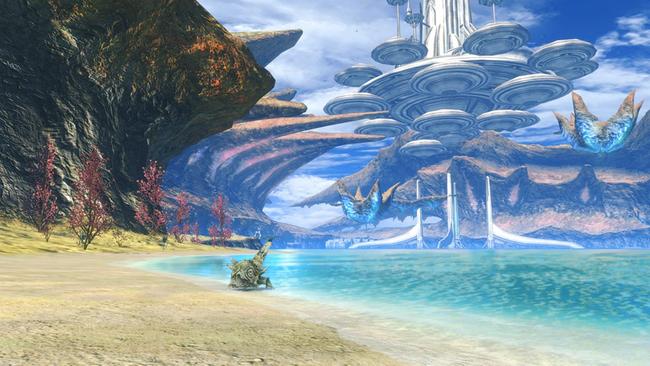
I’ve always felt that the biggest weaknesses of so many open-world RPGs is being unable to create a world that is fun to explore, has a distinct visual style to make it stand out, but also feeds a motivation to explore seamlessly into the narrative. Many I’ve played manages to only cover one or two at most of these facets, but Xenoblade Chronicles managed to accomplish all three. The narrative is kicked off with two titans, Bionis and Mechonis, locked in a battle to the death in a world of sprawling ocean. They defeat each other, leaving only their corpses in the wake of the battle. Over the eons, life is born from each and begin to live on the surfaces. Organic life is spawned on Bionis, and mechanical life from Mechonis. In the current state of the world, the inhabitants of both are locked in a conflict that’s been going on for so long that most people forget why it even started, with Mechon regularly invading Bionis colonies.
Shulk, a resident of Colony 9, is living a peaceful life with his friends until its invaded by the Mechon. His colony stores the ultimate weapon to fend off the Mechonis, a sword known as the Monado. This sword’s origin is a mystery, but what the Homs (a Humanoid race that Shulk is a part of) do know is that the Monado is one of the only weapons that can damage the Mechon. During this invasion, Shulk picks up the weapon to defend himself, finding out that he’s more compatible with it than anyone else. It gives him the power to see the future, but unfortunately due to his powerlessness, he’s unable to protect many of the residents of Colony 9. Shulk and his friends embark on a quest to travel across Bionis to reach Mechonis, to seek revenge and destroy every last Mechon.
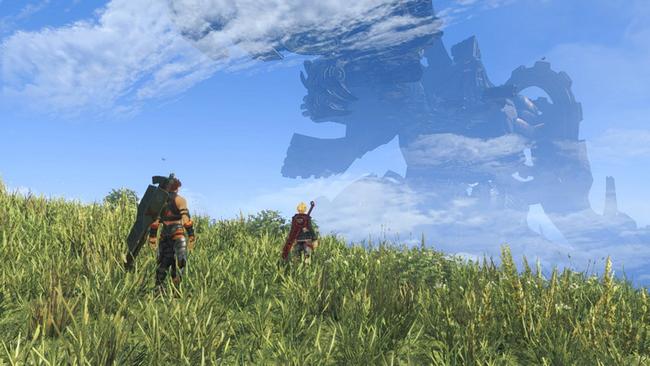
The term “epic” has been watered down throughout the years due to popular culture, but if there was only one piece of media I’d truly call epic, it’d be Xenoblade. The locations you travel through are all massive, with each subsequent one managing to surpass what came before it. What truly sells the idea of exploring the corpses of two giant gods are little touches you grow to appreciate on your journey. Seeing Mechonis looming in the distance right before reaching Gaur Plains is something I remember fondly, which perfectly fills the player in on the adventure they’re about to embark on with barely any dialogue needed.
Every single region you visit stands out, and the scale of each of them is daunting to say the least. In games this big, it's common for you to forget certain locations, but every single map in Xenoblade stands out to me as memorable. They all contain unique landmarks, aesthetics, topography, and music. I’ve seen plenty of people discuss the redone character models, and even though I prefer them to the originals I understand that the style is subjective. Excuse me for being presumptuous when I say this though: I cannot imagine anyone not seeing the redone environments as a complete improvement in every way. General structures for them are the same but textures, foliage, lighting, and color usage are all improved to make the game pop like you wouldn’t believe. The spirit of the original environments is still here, only improved across the board (which is impressive because Xenoblade already had stellar environments considering the Wii’s hardware limitations).
I do have to say though, I much prefer this new art style Monolith Soft went with for the character models. It hits a nice sweet spot between the more fantasy-inspired look of the Wii version and the highly anime-inspired look of the game’s sequels. I know this might not win everyone over, but I feel that the models are much more expressive than what Monolith was ever able to accomplish with the original game. Tetsuya Takahashi, one of the lead writers, went on record to confirm this in an interview with Famitsu recently to say for the original game: “Because of the limitations of the hardware we were working with, the resource tradeoff meant that the characters got the short end of the stick.”

Some animations were also reworked to accompany this change, and it makes the cutscenes look better than ever. Some of the animations were relatively untouched in simple dialogue exchanges, but during serious scenes the game always knows when to deliver. I think it’s impressive that they were able to overhaul the visuals so much and while keeping the resolution and performance so solid. The resolution is adaptive and only seriously drops when things get very busy, and obviously looks considerably better docked than undocked. Undocked play tends to have the resolution dip low, but the lack of a sharpening filter like in Xenoblade Chronicles 2 makes this never an issue. The game looks great that even when playing the game undocked and seeing the landscapes push the switch to its limits, I still was blown away by the presentation.
Some of my favorite moments in games like these are where you’re convinced some cool thing in the distance isn’t somewhere you can actually visit and then being proven completely wrong. You’re rewarded for going off the beaten path by the game’s Landmark system, giving you large amounts of experience, skill, and ability points to improve your characters. Landmarks also serve as nodes for fast travel and revival if your party falls in battle. Fast travel is also one of the only times where you’ll see noticeable loading times, as all of them have been almost entirely reduced across the board.
One great quality of life improvement that DE adds to make exploring more user friendly is Travel Guidance, which always shows players the easiest path from wherever they are to get to their destination in their active quest.
The active quest can be changed between the current story mission or whatever side quest you select with a quick menu assigned to ZR, making Travel Guidance work with ease.
The best part of this feature is that while it's selected as a default, you can turn it off in the menu if you want a more organic way to travel. Toggling this off, you're only given a simple map marker pointing to your next objective, leaving it up to you to find it like with the original version. I might actually recommend this in some ways because going on a specific path might subconsciously prevent you from going off and explore. The game also adds numerous quest markers to the game's maps for the active quests in your log. Every enemy or collectable pickup that is required for a quest will be marked with an exclamation point, making it clear at a glance what you need to do to fulfill a quest objective. I’m very satisfied with these additions since it makes quests and progression a lot more accessible.
The perfect cherry on top to make the game feel like a living, breathing world is the realistic placement of monsters and the day-night cycle. There’s an in-game time that always moves forward that affects NPC and enemy placement, which also can drastically change the look of some of the outside areas. Different enemies will show up depending not only on the time of day, but also the weather. Sometimes there will be a light drizzle, sometimes a huge thunderstorm. This doesn’t affect how you move through these areas, but this is another one of several little touches added to immerse the players and I can’t imagine the game without it.
Not only is there a decent variety of enemy types inhabiting each location, but they all have different behavioral patterns in how they respond to Shulk and his party. Some won’t fight you at all unless you engage first, some will immediately hunt you down if you enter their line of sight, and some only attack you if they hear you running near them. For the most part you’re able to avoid enemies if you wish to just take in the sights, and the freedom to do this while still providing the possibility of danger kept me on my toes. This attention to detail goes a long way into both making an immersive experience and giving the player plenty of options in how they engage with the game’s combat system.
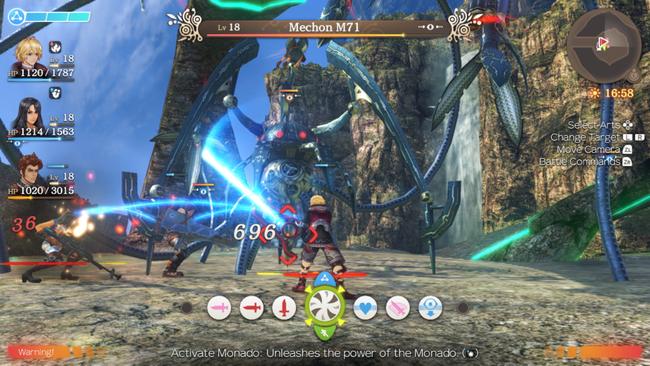
I never expected the battle system to be as addicting as it ended up being, with a good amount of challenge that slowly rises to adjust with the player’s understanding of it. There are ways to completely break the game’s difficulty in the story sections, especially if you’re overzealous with side quests, but I’ve never been one to do that, so I found it to be fairly paced with very little need to grind. Battles play out in a real-time system similar to how a typical MMO plays out, but personally I found Xenoblade more enjoyable than any MMO I’ve ever tried to play. There are also Expert and Casual mode options to choose, so players looking to experience to story or players looking to experience a challenge can do just that.
There’s a certain mechanical rhythm to how battles play out that made engaging the enemies always fun despite doing it hundreds of times throughout my playthrough. The only time I started to get a bit sick of fighting battles was approaching the endgame, where the dungeons become less about exploration and more about fighting waves of nearly unavoidable enemies, which I feel contradicts the game design philosophy set up for most of the experience. However, by then I was so invested in where the story was going that this aspect didn’t even bother me too much.
Characters can move around in battle, dealing damage with either their auto-attacks or by Arts. Arts are where the real damage is dealt, being manually inputted by the player and then needing to be recharged until they can be used again. The cooldown time for arts is fast enough for them to be viable and keep battles going at a fast pace, and these cooldowns are reduced over time as you gain AP. You get to customize which Arts a character has access to in their Battle Pallete in the menu, which also lets you spend skill points gained to improve them.
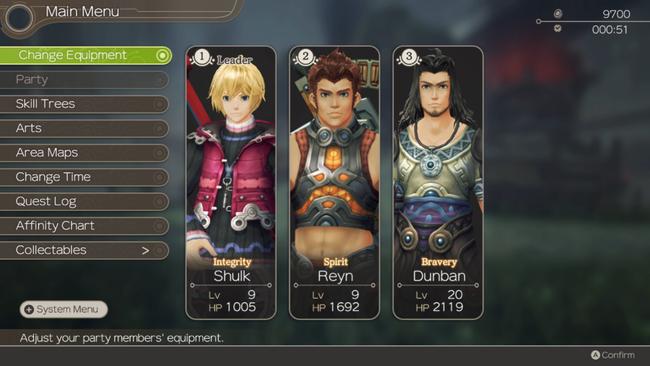
You’re allowed to have a party of up to three characters, and the game even lets you remove Shulk if you’d rather play as someone else. His playstyle resonated with me the most however, so I kept him as my leader for the majority of the game. Each party member fills a certain roll in combat, with them being variations of your traditional DPS, Tank, and Mage/Healer. Some characters even dabble in multiple categories, no character plays comparable to the other and this encourages people to be experimental with their party composition.
What further adds to the possible party customization is equipment and gems. In the original game, all of your equipment offered both cosmetic and stat changes, with the downside being that the armor designs tended to look a bit tacky. Most of the time, if you wanted to have the best possible stats, it meant that your characters would look very awkward in the cutscenes as they wore silly and probably mismatched armor sets. A simple yet genius improvement that remedies this is the inclusion optional “fashion slots”, like MMOs tend to have, which allow you to equip one piece of armor and set the appearance to any previously obtained piece of equipment. I decided to set every character’s appearance to their original outfit so I was never distracted during the game’s serious moments, but if you want the realistic sense of progression that comes with the cast changing their outfits as they travel the world you can completely ignore it.
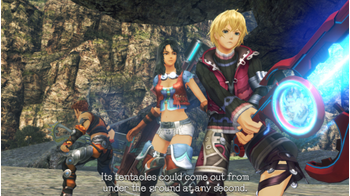
Shulk is the most unique of the bunch, and while he’s generally a DPS character, the Monado makes him stand out and a vital member of your party.
I have to give credit to Monolith for working the Monado’s powers from the story into combat gameplay, and this only improves its versatility as Shulk obtains more powers for it as the narrative progresses. I won’t spoil most of these, but at its core the Monado works best at enchanting your teammates' weapons to cause damage to Mechon enemies.
The Monado is also able to see the future to protect your party members if they’re about to die. When someone Shulk cares about is destined to die in the near future, he gets a vision so he can try to prevent it. This works as a fascinating way to drive the narrative forward but by making it important to the flow of battle the player is better able to understand it’s significance. When an enemy is about to deal a death blow, Shulk will see it happen around 10 seconds before it does. He can then either cast defensive magic on the character in question (or even himself) or run up to them and warn them.
The bond between the group is another way the narrative is able to weave together with the gameplay. By helping out and encouraging your party members in battle you gradually fill the party gauge. The party will talk to each other constantly in combat to optimize their teamwork and cheer each other on, with moments where things slow down to pull off a ring-based quick time event to shoot the Party Gauge up significantly. This mechanic also applies to engaging battles, albeit without the slow motion, giving you an edge if you pull it off.
I always struggled with the timing of these moments in the original game, but I was surprised just how much the implementation of the Switch’s HD Rumble improved my efficiency in battle. It's somewhat tricky to explain why battles just feel so much better with the perfectly timed vibrations, but when switching between my standard Nintendo Switch and my Lite I noticed I did much worse on the Lite. I was never expecting a change like would make me love the combat system so more than I ever did on Wii and 3DS, but Monolith did a great job implementing this often under-utilized feature of the Switch.
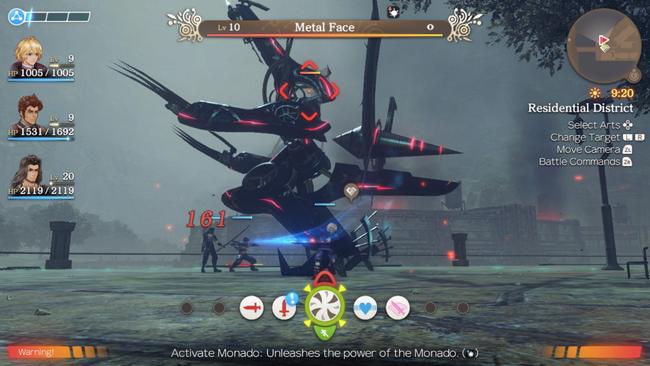
When the Party Gauge full you’re able to pull off a Chain Attack, which stops everything to set up combos with Arts to knock down your enemies and deal a ton of damage. Art timing is vital to your success in battle, with status ailments being the best way to turn the tide in your favor. There are three main ones that should be done in succession to give you an advantage. First you want to have one character cast an Art with a Break side effect, then another cast one with Topple to knock the enemy down and put them in a weakened state. Finally toppled enemies are able to have Daze inflicted on them, which keeps them down and weakens them further.
The battles are in the perfect sweet spot of being a nice take on established MMO mechanics while still being engaging for people who don’t tend to enjoy how games in that genre play. It’s a simple combat system yet full of depth in how you approach customizing that experience. This leads to battle mechanics that I feel have remained unsurpassed by the other Xenoblade games, which threw an overwhelming amount of mechanics at the player and didn’t feel as fun.
The combat and exploration would be nothing without an excellent score to compliment them, and Xenoblade has one of the best around. There are 91 tracks in the base game, and as cliché as it sounds to say that all of them perfectly match every scene, it really is true. It jumps between serene beauty of nature and exhilarating rock music for battles with ease. The Definitive Edition offers the option to switch between the original soundtrack a new arranged soundtrack for both the field and battle music. Like with almost every addition, this being a toggle in the options means that even if you don’t like the newly recorded or remixed music you don’t have to listen to it. Personally I find all of the arranged music to be better than the original, but one of the reasons for that is because it’s based on an already amazing soundtrack.
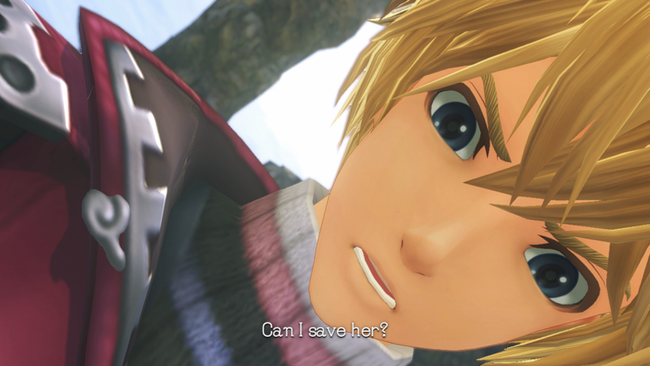
Since giving players options to curate their experience is at the core of the game, of course, you can also set your preference between English and Japanese voice acting. The dub for Xenoblade is beloved for how natural it sounds and how much life the British based cast brought to their roles, but the original Japanese cast is equally great. The lip flaps have been redone as well, and while there are occasional moments of not matching up with the English dialogue it’s leaps and bounds better than what Xenoblade Chronicles 2 did.
I’ve always preferred the English cast, and I think Adam Howden’s performance as Shulk elevates him as one of the most likable protagonists in all of RPG history. The way he delivered his lines with both subtle nuance and some extreme raw emotion makes him likable from the moment the game starts to when the credits roll. Besides my own preferences though, I do recommend playing with the English voice track over the Japanese one for a very specific reason. While all of the cutscene dialogue is subtitled (with a very good font that’s a big improvement over what was used in 2), battle and field dialogue is not. You lose out on a lot by not understanding what the characters are saying to each other during these little moments spread throughout the game.
Spread throughout the world are optional events called Heart-to-Hearts that you can view if you meet certain conditions, such as bonding levels obtained from how much you use your party together and story progression.
These side dialogues flesh out the characters more and their relationships with each other, and they’re worth seeking out.
Since most of them require a moderate or maxed level of bonding levels with each character, it also pushes you in the direction to be more experimental with your party. I wish that the Definitive Edition went the extra step to add voice acting to these moments, but I imagine getting all the cast back and having them not sound vastly different after 10 years would have been a challenge.
I think one of the common critiques of the game’s successors (X and 2, but X’s relation to the canon of the other two is tenuous at best) were their narratives. After playing this to completion, I can confidently say if you’ve only played either of those and felt that the characters and plot didn’t click with you, the original Xenoblade is still worth giving it a shot. You’re in for an experience on a whole other level. Put simply: I was blown away with what happened in this game. I really feel this is Monolith at their finest, weaving a complicated narrative touching on the themes such as the cyclical nature of vengeance caused by war, xenophobia caused by fear and ignorance, the nature of fate and what it means to take destiny in your own hands.
The themes it discusses are so effective because it doesn’t just pose an unanswered question about “society”, it sows the seeds early on and builds cleverly on them until the payoff feels deserved. For those worried, if the Definitive Edition would have added or changed certain the story in any significant way, you don’t have to worry. The story has been retained in its entirety to preserve the experience while just improving how you get from point A to B. By the time I finished the game, I was completely blown away by the places it went with its narrative, and even despite minor issues here and there this has been cemented as one of my new favorite games of all time.
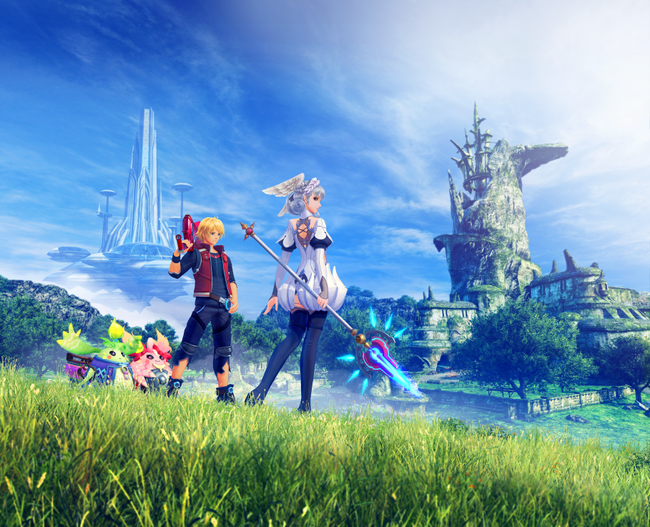
So obviously, I had extremely high (yet reasonable) expectations going into the new epilogue chapter: Future Connected. People have been speculating for months about what or if this will add to the overarching story of the Xenoblade series. This 'extra story' is accessible from the main menu at any time, but it is heavily recommended to be played after the original game is finished because the first new cutscene ends up heavily spoiling the finale of the original game.
To offer a brief premise of Future Connected, the story begins with Shulk and Melia going to visit the Bionis Shoulder a year after the events of the base game. However, they then get attacked by a mysterious monster called the Fog King, sending their ship crashing into the Shoulder. It strands them there along with the Nopons Kino & Nene, two of Riki's children. The real goal of FC is to flesh out and tie up some loose plot threads that Xenoblade never explored, going as far as to bring in some characters and events you would have only known about from late-game side quests.
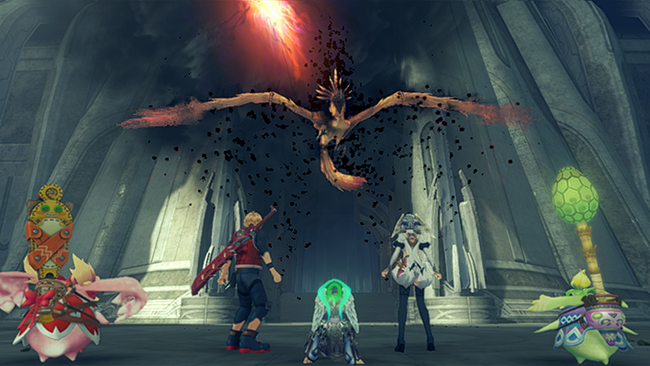
I enjoyed myself greatly for most of the 12 hours spent completing the entirety of this epilogue, which includes all of the side quests. The gameplay has been given slight changes, and the biggest is the implementation of the Ponspectors. These are a group of Nopon you can choose to recruit that are spread throughout the Bionis shoulder, looking for treasure and adventure. When you recruit one they march behind the group in an adorable way, and they even participate in battles with you.
The best part of FC in my opinion is the new take on Heart-to-Hearts, called Quiet Moments. Ironically the reason I enjoy these so much is that unlike Heart-to-Hearts, these have voice acting to give them more weight. There are so many great moments that have Shulk and Melia reflect on how the events of the original game affected the world, and just as many of Kino and Nene being the most adorable characters in the universe. Calling them precious is the understatement of the year, with both of them looking up greatly to their father and the whole original party so they can one day grow up to be Heropon just like them. Their voice acting is cute, adapting the style of speech introduced in X and 2 while never being as annoying. They are not only the best Nopon characters the series has ever had, but even managed to have me retroactively like Riki as a character much more than I did originally.
While I was enjoying most of this new adventure, there were some issues that popped up during my time with it. The voice acting is very well done considering that Shulk and Melia’s actors are now ten years older, but I noticed a handful of times where the subtitles didn’t match with what was verbally said. This is likely possible to be patched around or after launch, so I don’t think this is too big of a deal but worth mentioning in case it doesn’t. My main issues with Future Connected come from the fact that while it does a great job with the story threads that follow up from the original game, but not always a great job with the new ones it introduces. The final confrontation felt a little anticlimatic, but I’m happy at least that the writing didn’t try to jump the shark and add unnecessary new ties with X or 2.

The characters are the real reason to play FC because they’re wonderful, and just because I didn’t care too much for where the larger story went doesn’t mean I didn’t enjoy most of what it had to offer. The storyline surrounding Melia feels like a natural and sensible avenue for this extra story to explore so that it doesn't feel tacked-on or unnecessary. Following up Xenoblade’s ending is no easy feat, so just make sure you go in with tempered expectations. It does a good job giving Melia more development, and that alone is worth playing through it. That, and Kino and Nene of course.
Monolith wasn’t playing around when they set out to make this version of Xenoblade the “Definitive Edition”. I found it to not only live up to the heavy legacy of the original game but surpass it in every way. All of the quality life improvements make the game more accessible, while not taking anything away from the original game. The battle system is one of the most addicting I’ve played in a very long time, the overworld is gorgeous and a joy to explore, the music is a work of genius, and the story is told with a level of maturity rarely seen in JRPGs. It’s a massive adventure that can easily last you well over a hundred hours if you put the time into it. Not only is this one of my new favorite games of all time, but I think this is easily the best game to ever come from Monolith. If you’re looking for a great RPG for Nintendo Switch, Xenoblade Chronicles is exactly the game you’re looking for.

